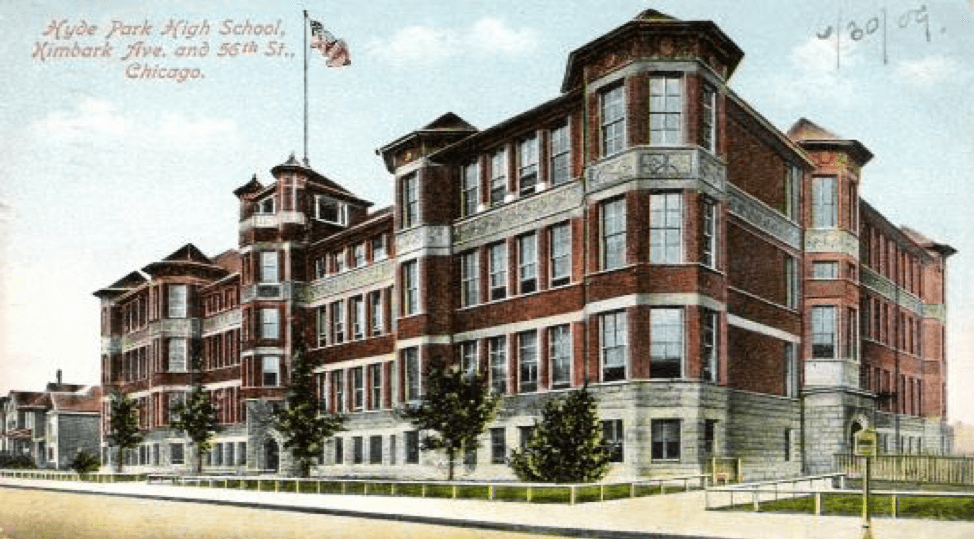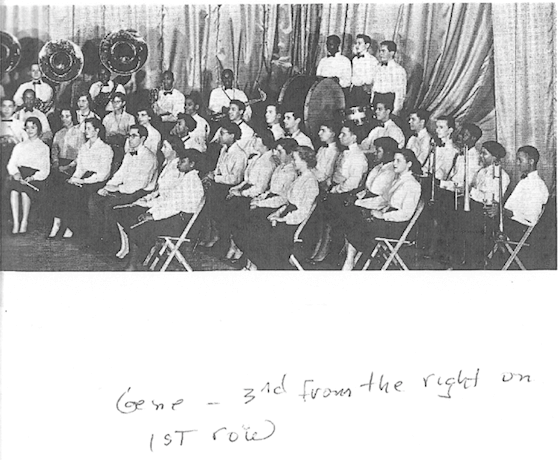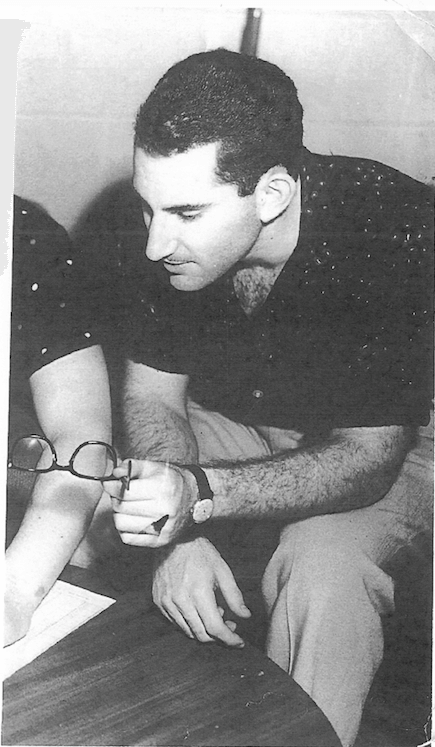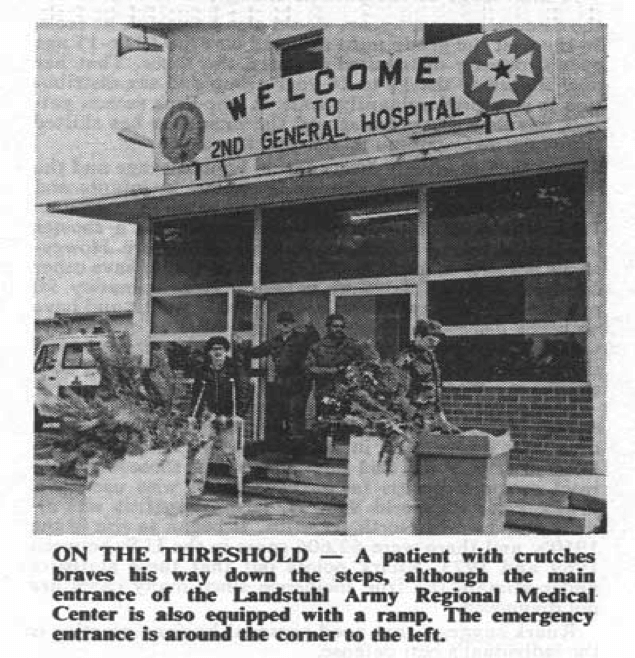Read the first part of this essay, Eugene Dinkin: The Saga of an Unsung Hero.
The long-lingering question of the whereabouts of JFK assassination conspiracy figure Pfc. Eugene B. Dinkin has a sad answer. The Kennedys and King website has learned that Dinkin died in Los Angeles in 2012 at the age of 73.
Since my initial finding of information about U. S. Army PFC Eugene Dinkin at the National Archives at College Park, Maryland, I have attempted in a number of ways to hopefully meet him and learn more about him. I have found more information about him from a number of sources. Publishing this information about Mr. Dinkin is meant to provide a clearer picture of him prior to his joining the U. S. Army in 1960.
Here is a recap of some basic information about Dinkin’s attempt to foil the plot that was in place to assassinate President Kennedy.
Regular Army Private First Class Dinkin was serving in Metz, France, in the 59th Ordinance Group. He held a secret security clearance for his job in the crypto section of his unit. Prior to enlisting he had attended the University of Illinois at Champaign/Urbana. He and his family had lived in Chicago. His studies at the university included psychology. His duties in Metz would have included deciphering cable traffic from the European Commands, NATO and so forth.
In September, 1963, Dinkin noticed material in the Army newspaper, Stars and Stripes, and other print publications that was negative toward the president and his policies and implied that he was a weak president in dealing with the Russians. The examples that he found became more negative, the suggestion being that if Kennedy were removed as president it would be a good thing.
By mid-October Dinkin had found enough information—some of it subliminal—that he was convinced that a plot was in the works, one that was driven by some high ranking members of the military, some right-wing economic groups, and with the support of some national media outlets.
He did not tell his superior officers about this information—given that he believed that the military was involved. He did tell quite a few Army friends and some others mentioned in my original article. This information probably got back to Army authorities because Dinkin was transferred to the Army Depot in Metz, where his duties did not require a secret clearance.
Dinkin's studies forced him to conclude that the plot would happen around November 28, 1963, and that the assassination would be blamed on “a Communist or a Negro”. He then sent a registered letter to Attorney General Robert Kennedy. When he got no reply, he decided on other options.
In late October, 1963, Dinkin gathered up the material that he found had psychological sets, which Dinkin would be sensitive to because of his college studies. Psychological sets are a batch of information that is used to induce a particular state of mind in an individual being exposed to the sets. The sets can be a series of pictures, events, written statements or combinations of the aforementioned examples that are used by advertisers and others to implant ideas into the mind of the people being exposed to them. In advertising, of course, the goal would be to get you, the target audience, to be interested enough in the product or service that you would buy it.
 |
| Hyde Park High School |
Eugene Barry Dinkin was born in Chicago, Illinois on June 10, 1938. He died in California on May 21, 2012. Eugene grew up in Chicago. He attended school there, including Hyde Park High School, where he graduated in 1956. The school is still there today, but is known as Hyde Park Academy. It is in the same location across the street from Jackson Park, the designated site of the Obama Library. The Museum of Science and Industry, Lake Michigan and beaches are about a mile to the east. The University of Chicago where Eugene took some courses is about a mile to the west.
 |
| Dinkin's band class photo, from his senior class yearbook Aitchpe (1956) |
When he was in high school, Gene, as his friends called him, was in the high school band. He played flute (see photo at right). He also did some boxing. As a senior at Hyde Park High school, Gene and some other students were listed as camera-shy, so there is no portrait-style photo of him in the yearbook; however, I obtained a photo of him from the time that he was a student at the Urbana/Champaign campus of the University of Illinois (see photo below).
 |
| at University of Illinois, C-U |
Gene graduated from the University of Illinois in August, 1960. While there, he received a bachelor’s degree in Liberal Arts and Science. Friends who knew him at this time say he was a friendly guy who looked a little bit like Kirk Douglas, the movie actor. They also said he was a serious person who would take a stand on what he believed. (We know this for sure based on his persistence in attempting to save President Kennedy’s life, and later when he and his mother tried to provide information to Attorney General Robert Kennedy, and later still when he sent information to the House Select Committee on Assassinations.)
After college, we know, of course, from the April, 1964 FBI interview of him when he had moved back to Chicago and lived on Oakdale Avenue, that he had served in the 59th Ordinance Group in Metz, France. There he found the assassination plot information that he tried to get to the authorities so that they would warn the President.
Thereafter, he had been stationed at Headquarters Company in Metz. He left there in early November and went to Luxembourg, Switzerland and Germany, where he gave plot information to several agencies. Documents from the National Archives show that he was tracked in these countries by the CIA and the FBI.
 |
| Landstuhl Army Hospital |
Then, when he returned to base, he was placed in detention and subsequently sent to Landstuhl Army Hospital for a psych exam (see photo). Not long after that he was sent to Walter Reed Army Hospital’s psych ward. There, he was held for several months until he was discharged from the army.
In 1977, when the House Select Committee was holding their sham re-investigation of the assassination of President Kennedy and Reverend Martin Luther King, Gene was living in Encino, California. He continued to live in California until his death of natural causes in 2012.
Acquaintances who knew him in California say he worked as a counselor/therapist. He apparently kept an ongoing interest in the murder of President Kennedy. In 1998 he wrote an article and review based on a book about the assassination.
I am very sorry that I did not have an opportunity to meet this very brave man. He did all that he could humanly do to save the President. He did all he could to provide information to help solve the case. I hope that my writing about him will somehow bring him the recognition and honor that he is due.
The research into the murder of President Kennedy by many dedicated individuals has brought us to the edge of finding out who planned the assassination, how the operation was planned, and which traitors shot the President, but this information will only get out to the public if the citizens care. How can they show that they care? Demand that all of the files held by the CIA, FBI, U.S. Army and other agencies and individuals be released now, not 6 months from now. Demand that there be a new independent investigation of the murder of Senator Robert Kennedy, for all evidence found to date indicates that his murder was planned and carried out by many of the same people who assassinated the President. Demand that Eugene Dinkin be awarded the Presidential Medal of Freedom and that his family be compensated for the illegal, horrible treatment that he endured. To do less than this is to allow a great injustice to stand.

